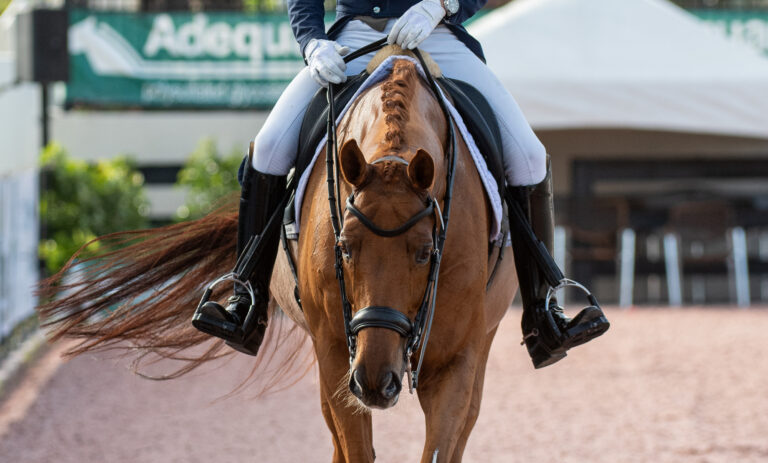The rules of ring etiquette are flexible and adaptable to the given situation. While riding, the safety of horse and rider should always be the first priority and common courtesy should also be present. When riding in a group, remember to communicate with other riders and keep an eye on patterns and attitudes of the horses around you. However, here are a few standard rules that should help.

Right-of-Way Rules in the Arena
- In general, riders should pass left shoulder to left shoulder.
- Remain on the second track when working at the walk.
- Announce, in a loud voice, when you are entering and exiting the arena.
- Keep at least one horse’s length between you and another horse.
- Don’t ride up the tail of any horse. Turn across the arena.
- Use the second and third tracks. The most used part of the ring is the track—the outermost path around the ring going in to each corner. When many horses are utilizing the same space, it may be necessary to use the second and third tracks. The second track is just to the inside of the outer track, leaving just enough space to pass between you and the rail. The third track is two meters (6 ½ feet) from the rail and allows even more room for horses to safely pass you on the outside.
- When riding a circle, look in the direction you are going and ride on the second track. This allows other riders to pass you on the outside and not cut through your circle. If you doubt that another rider is aware you are circling, you may call out “circle,” to let others know your intentions before moving to the second or third track.
- Faster horses or horses traveling at a faster gait should avoid getting too close behind other horses. This can be achieved by circling or utilizing ring figures such as a half-diagonal, serpentine or turning across the B-E line.
- In a lesson situation, the person under instruction should have the right-of-way. Other riders in the arena can be listening to the instructor and anticipating where the horse and rider in the lesson will be going next.
- Green horses and beginner riders should be given more space by more experienced riders, who also should keep an eye out for the possible out-of-control moments that green horses and riders may experience.
- Upper-level horses can be intimidating to a lower-level rider as they come across the diagonals. However, the basic patterns they follow are the same as at the lower levels. They should be treated as any horse and rider would be. By making eye contact, you can avoid potential collisions.
- The use of voice is another tool to gain the attention of focused riders and to let them know where you are planning to go.
These rules are a good starting point for approaching a ring full of horses. However, there are many situations that call for deviations from the basic rules. If a 3-year-old horse has an explosive moment and comes leaping across the diagonal while you are pleasantly trying to leg yield on a line that has now turned into a collision course with a spring-loaded youngster, you need to stay out of the way. Riding requires tact, timing and coordination with your horse as well as the other riders in the arena.
This article first appeared in the November 2004 issue of Dressage Today.
Beth Beukema is president of the Intercollegiate Dressage Association, a U.S. Dressage Federation (USDF) bronze and silver medalist and a U.S. Equestrian Federation (USEF) dressage “R” judge. She is associate professor of equine studies at Johnson & Wales University and directs its Center for Equine Studies in Rehoboth, Massachusetts.











